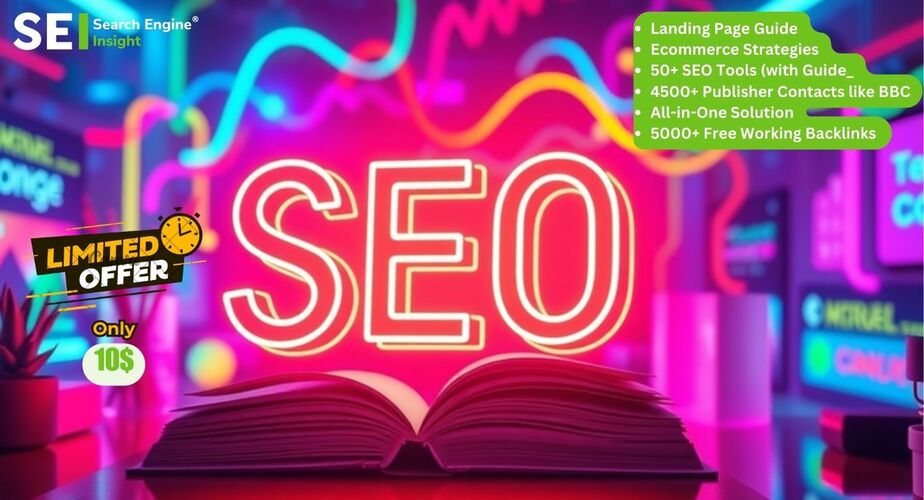Understanding How Crawlability, Indexability, and Usability Improve Visibility
Optimizing your search visibility often seems like shouting in a jammed stadium. You produce wonderful content, create a lovely site, and anticipate visitors to flock to it, but the response is as silent as a graveyard.
The issue is usually in the not-so-visible foundation that search engines require to locate, comprehend, and serve your site to users. This “visibility” process relies on three essential pillars harmonizing like gears in a machine: how well search engines can crawl your site, if they can accurately index your content, and how well users can access and navigate your pages once they arrive.
What Is Search Visibility?
Search results visibility is the proportion of your site clicks resulting from organic search queries for all the keywords you are ranked for. When someone is searching for something relevant to your business, visibility measures how often your site is shown and clicked on compared to your competitors.
Low visibility simply indicates your site is least visible in search results, and this deprives you of getting visitors. However, both traffic and real results must be monitored so that you can analyze your website’s visibility. Good visibility without traffic may mean your pages are highly ranked but not clicked because your titles are weak or your content is poor.
Monitoring SEO visibility is easier once you gain access to the best backlink tool. They not only help you watch your link profile, but also show you how your rankings translate into estimated traffic.
The relationship between building links and improved visibility is straightforward since quality backlinks indicate authority to search engines, and this will end up giving you a better ranking and search results visibility.
What Is Crawlability?
Search engines employ programs known as crawlers or bots that check web pages around the clock, linking from page to page like tourists following a trail. Googlebot runs 24/7, finding new content and refreshing its massive database with information it discovers. Remember that the SEO crawlability of your website determines if these bots can crawl your content and interpret your website’s structure.
Factors That Affect Crawlability
Several technical elements might result in crawlability issues and prevent your website from being fully crawled by search engines. Technical elements, if not properly set, will not allow crawlers to crawl important pages, which adversely affects your SEO visibility. These are the most important elements that might affect crawlability:
- txt files will prevent search engines from crawling critical pages if not set up correctly.
- Weak internal linking keeps some pages out of reach of spiders.
- Slowing down the page loading speed restricts the volume of pages crawled per visit.
- Server errors, redirect loops, and broken links stop crawlers from crawling your site.
- Types of supporting content, complex URLs, and nofollow tags also restrict access.
How to Optimize Crawlability
Optimizing crawlability is required to boost your search results visibility and ensure that all your vital pages are found. Crawlability is all about removing roadblocks and guiding search engine spiders smoothly through your site. The following are the best ways to optimize crawlability:
- Create a full XML sitemap with all the required pages and submit it to Google Search Console.
- Create a strong internal linking structure so that your major pages are accessible within three clicks from your home page.
- Use descriptive anchor texts for internal linking and do not overuse nofollow links for navigation.
- Enhance the loading time using image compression, code optimization, browser caching, and upgrading your hosting provider if necessary.
- Regularly test your robots.txt file to ensure it is not blocking key pages.
- Track broken links, redirect chains, and server errors with tools like GSC.
What Is Indexability
Indexability is the ability of a web page to be processed and stored in search engine databases for future retrieval in search results. Only indexed pages are shown in search results by the search engines, so indexability is strictly essential for overall visibility.
But search engines take many things into account when determining whether or not to index a page, such as content quality, uniqueness, technical execution, and user value. Pages that provide authentic value and are technically sound end up in search indexes, with low-value or duplicated content being filtered out along the way.
Factors That Affect Indexability
Technical SEO, as well as content quality, play a part in whether search engines will index your pages. Some of the primary factors that affect indexability are:
- Inappropriately using noindex meta tags to prevent pages from being indexed.
- Making it difficult for search engines to determine which page to index with duplicate content.
- Creating confusion with server errors, redirect chains, and poor canonical tags.
- Complicating indexing with low-value or thin content.
How to Improve Indexability
Creating unique, quality content for each page serves to inform search engines why they must keep your material in their databases. Just attempt to provide actual value to your users and avoid trying to manipulate the search algorithms. Each page must address certain topics and never rely on duplicate content.
Having good technical SEO components enables search engines to effectively comprehend and process your content. Utilize descriptive title tags, engaging meta descriptions, and proper header formats in order to establish hierarchy and content priority. Make sure all important pages have clean and descriptive URLs that match their content topics.
Similarly, handling duplicate content through canonical tags and intelligent content planning prevents index mix-ups. If you’ve got similar content on other pages, add some canonical tags to indicate which one’s the primary version for indexing. You may also want to consolidate those thin or duplicate pages into quality resources that provide users more value.
Finally, tracking your index status in Google Search Console assists you in identifying and correcting indexability issues in a timely manner. Look for crawling, indexing, and manual penalty errors that could cause your content to not show up in search results. Eliminate any technical issues as soon as possible to ensure consistent indexing on your website.
What Is Usability in SEO?
Website usability determines how well your visitors can find their way around, comprehend things, and achieve what they seek on your website. From an SEO point of view, usability has a lot to do with how search engines perceive the value of your site to users, and usability influences your rankings and how visible your site is in general.
Modern search algorithms also take into account user behavior metrics like bounce rate, time on page, and task completion rate to decide on site usability score. If your users are not able to properly use your site, these negative signals inform search engines that your content is not fulfilling user needs, and that hurts your search visibility score in the long run.
Usability Factors Having An Impact on SEO
Usability is important to your website’s performance in search engines and how users like to spend time on your website. When your website is usable, users spend more time there, and that can boost your visibility too. So, here are the most significant usability factors that impact SEO:
- The loading speed of a page contributes to search rankings and usability.
- Mobile responsiveness can affect how well your site ranks on search engines.
- Having clean navigation and a logical structure on a website impacts its usability.
- The readability of the content and layout can also influence usability and SEO.
Best Practices for Usability
Usability has a direct effect on how easy it is for your users to find what they need and how search engines understand your site hierarchy, which in turn directly affects your search results visibility. To make your site usable and SEO-friendly, apply these best practices:
- Make simple navigation with clear menu labels, breadcrumb navigation, and have every major page within three clicks of the home page. Avoid complex dropdowns or confusing navigation.
- Improve page loads by compressing images, reducing code, and optimizing server response. Measure Core Web Vitals such as Largest Contentful Paint and Cumulative Layout Shift for a stable and quick experience.
- Make it mobile-friendly by employing a responsive design that fits every screen and touch input. Test on different devices so that buttons are tappable and the text is legible.
- Write clear, readable copy with descriptive headings, short paragraphs, and logical organization. Use images or videos to clarify and keep load times short.
Understanding the Interplay of Crawlability, Indexability, and Usability
The interconnectivity of indexability, crawlability, and usability explains how they impact your overall website visibility and score. All three are an integrated system, with each one complementing the others for greater effectiveness. This is how they work:
- Good crawlability allows search engines to discover more of your content for potential indexing.
- Strong indexability ensures that crawled content is stored in search databases and can appear in search results.
- Excellent usability creates positive user signals, which reinforce crawling and indexing decisions.
- Technical improvements for crawlability often improve usability, such as faster load times.
- Better indexability typically means higher content quality, leading to improved user satisfaction.
Common SEO Mistakes You Must Avoid
Steering clear of common SEO mistakes is important to maintain site health and a good Google visibility score. Most companies do something incorrectly that prevents their sites from being indexed or that annoys users and can damage rankings and traffic. Be wary of these pitfalls:
- Accidentally blocking important pages with restrictive robots.txt files or noindex tags can keep valuable content out of search results.
- Forgetting mobile SEO best practices can make the site hard to use on smartphones and result in reduced rankings with mobile-first indexing.
- Solutions based on technology at the expense of content quality and value to the user can mean the website does not meet the visitor’s needs.
- Ignoring website usability research and users’ feedback can make you lose opportunities to learn and improve upon actual user requirements.
If you keep tracking your site, test out changes before you release them, and get some feedback, you can prevent these issues and create a site that search engines and users absolutely adore.
Conclusion
To make your business more visible, you need to get a handle on how crawlability, indexability, and usability all work together. When search engines can crawl your site easily, index your good stuff correctly, and catch on to positive signals from users, your site’s visibility just improves for all the right search queries. Investing time in these fundamentals completely pays dividends with more organic traffic, happier users, and a better position in search results than your competition.




